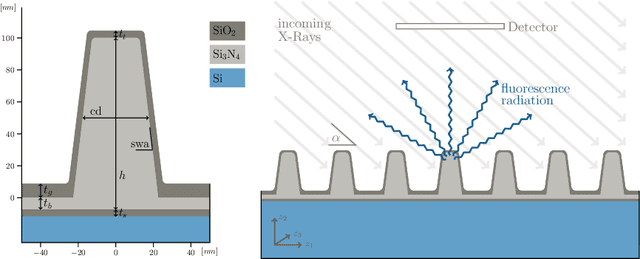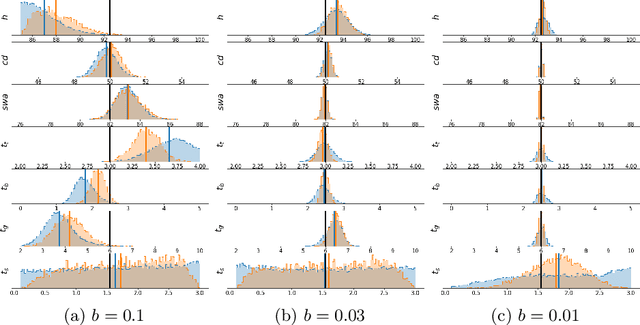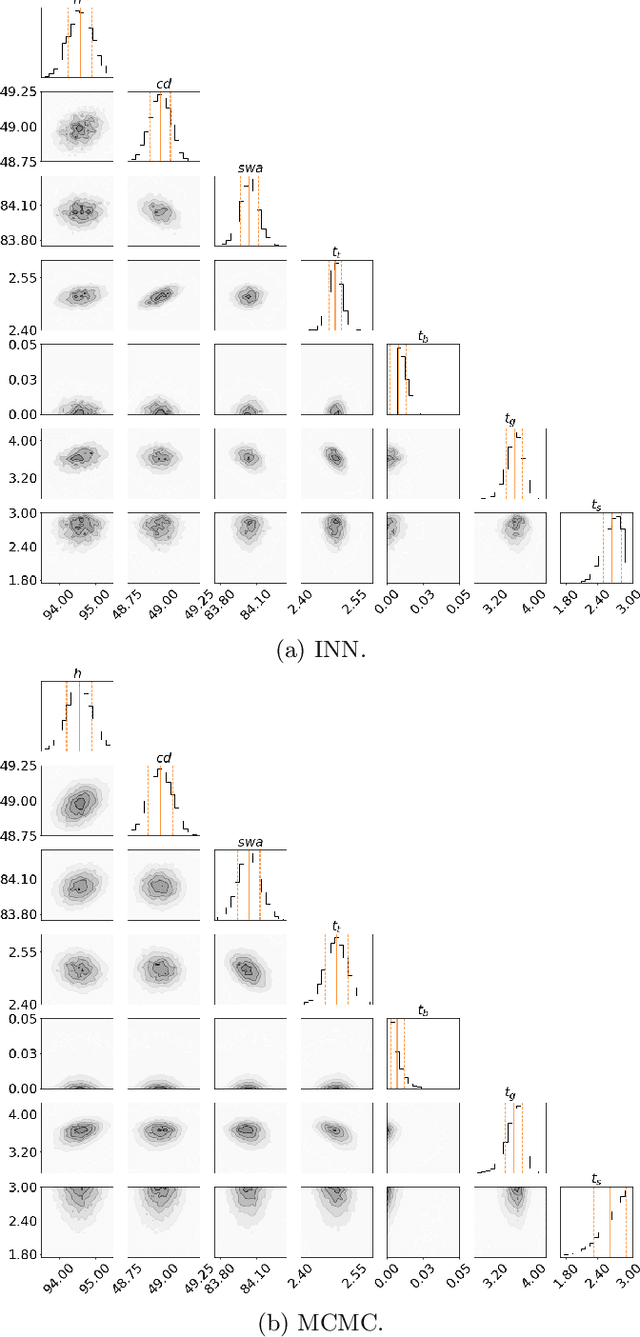Nando Farchmin
Invertible Neural Networks versus MCMC for Posterior Reconstruction in Grazing Incidence X-Ray Fluorescence
Feb 05, 2021



Abstract:Grazing incidence X-ray fluorescence is a non-destructive technique for analyzing the geometry and compositional parameters of nanostructures appearing e.g. in computer chips. In this paper, we propose to reconstruct the posterior parameter distribution given a noisy measurement generated by the forward model by an appropriately learned invertible neural network. This network resembles the transport map from a reference distribution to the posterior. We demonstrate by numerical comparisons that our method can compete with established Markov Chain Monte Carlo approaches, while being more efficient and flexible in applications.
The Oracle of DLphi
Jan 27, 2019Abstract:We present a novel technique based on deep learning and set theory which yields exceptional classification and prediction results. Having access to a sufficiently large amount of labelled training data, our methodology is capable of predicting the labels of the test data almost always even if the training data is entirely unrelated to the test data. In other words, we prove in a specific setting that as long as one has access to enough data points, the quality of the data is irrelevant.
 Add to Chrome
Add to Chrome Add to Firefox
Add to Firefox Add to Edge
Add to Edge